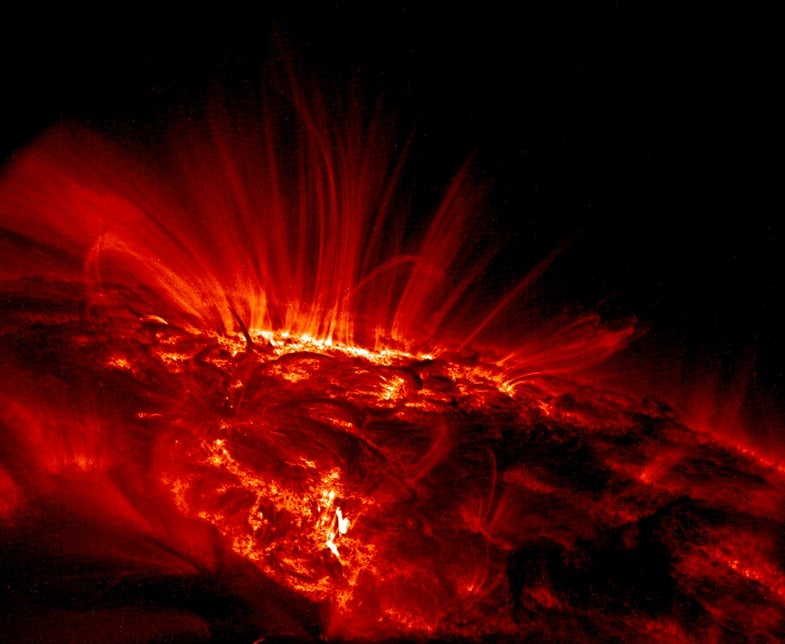Hot Or Not… For Sunspots
We all know the dangers of getting too much sun: things like sunburn and heat stroke can really ruin a...

We all know the dangers of getting too much sun: things like sunburn and heat stroke can really ruin a summer day. But did you realize that activity on the sun’s roiling surface can also cause us a lot of grief?
“Sunspots,” which look like black holes in the sun’s surface, are where bundles of magnetic fields cross the surface of the Sun from the solar interior to the solar atmosphere and back. Hot gas from below bubbles up to the surface (also called the photosphere); the sunspots look dark because they are cooler than their surrounding area. Eruptions from sunspots often shoot X-Rays and high-energy particles our way. Even though the sun is 150 million km (93 million miles) away, solar activity can endanger the International Space Station and the astronauts inside, as well as aircraft flying at high-altitude or high-latitude. X-Rays and high-energy particles can mess up GPS signals and our electrical grid.
Very intense X-Rays can cause our ionosphere to inflate, which interferes with radio communications, and can cause drag for our our satellites in orbit. On the plus side, when these interruptions interact with Earth’s magnetic field, they also cause the spectacular northern lights.
Clearly, it would be a good idea to get a better idea of how sunspots and sunspot groups work — and that’s where you come in. The latest project from Zooniverse is called Sunspotter, and for a new dataset being released this week, it wants you to help classify sunspot images according to complexity.
“[We are] aiming to improve the prediction of eruptions on the Sun by asking the general public to rank sunspots in terms of complexity (a literal ‘hot-or-not’ for sunspots),” said Dr. Paul Higgins, lead scientist for the project. “Like weather forecasting on Earth, we currently can not predict eruptions with any accuracy. This will expand human knowledge about the Sun and allow us to more effectively protect humans in (and near) outer space.”
To participate, simply create a Zooniverse login (or if you have one already, use that), and dive into the classification training. You can then start reviewing images for the project.
The last Sunspotter project helped researchers review more than 12,965 images.
—
Chandra Clarke is a Webby Honoree-winning blogger, a successful entrepreneur, and an author. Her book Be the Change: Saving the World with Citizen Science is available at Amazon. You can connect with her on Twitter @chandraclarke.